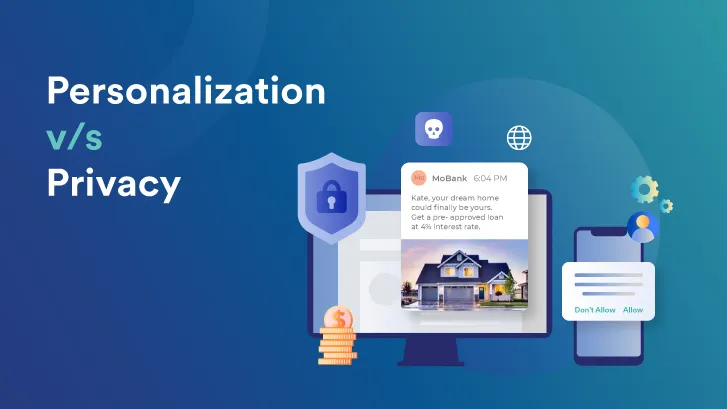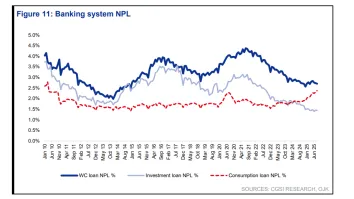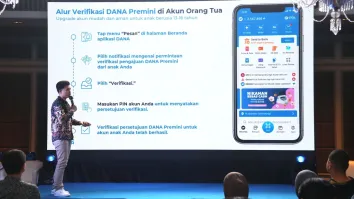
Navigating the Personalisation and Privacy Paradox in the Context of Digital Transformation of Banking in Southeast Asia
Despite the pandemic, Southeast Asia’s commercial and retail banking vertical has been flourishing, with investors ready to fund more digital banking initiatives in the region.
There has been a positive influx of licensing regimes in the ASEAN markets for digital banks, with eight more licenses expected by the end of 2021. The new entrants in the digital banking space are backed by fresh capital infusion spurred on by competition from local players. The end goal however is to empower the consumers and provide them with all the necessary capabilities to improve their financial outcomes.
One of the banks in the region to benefit from fresh capital infusion is RCBC from the Philippines. After picking up a recent round of funding from SMBC, Japan, RCBC has planned a lot of initiatives including upkeep of banking services, capturing a sizeable chunk of the population, and fast-tracking financial inclusion by serving both the affluent and the mass market segments.
In fact, RCBC has closed over 70 branches because over-the-counter transactions have been reduced and digital transactions have grown by 208%. DiskarTech, the Philippines’ first and only financial inclusion super app from RCBC has seen a 388% quarter-on-quarter usage growth with more than 4 million downloads and 2.3 million registered users, showcasing the tremendous adoption of digital-only banking amongst Filipinos and the region at large
It is clear that digital transformation of banking services is the way forward with traditional banks either working with fintechs or creating digital banking offering themselves. Owing to mandatory lockdowns and social distancing norms during the peak of the pandemic, physical branch visits went down drastically. However, it was far from a transient trend as reports indicate physical branch visits to dip from six times a year to two by 2022 amongst millennials aged 18 to 24 years. In fact, branch traffic isn’t the only metric expected to fall. With mobile devices becoming the primary mode of access to credit, desktop banking is also reported to decrease by 63% by 2022.
With a new segment of customers coming in, it is crucial to provide differentiated and customised experiences in order to engage and retain them. This is where personalisation comes into the picture. It helps banks and financial institutions provide customers with the high-touch, offline experience they are used to, now in an online space.
Personalised experiences are the need of the hour but what about privacy?
Offering each individual a customised experience based on their behavior, spending patterns, and preferences is thus the need of the hour. Not only will this ensure greater customer engagement with the bank, breed trust, and loyalty, but also improve the revenue and add to the bank’s bottom line. In fact, a BCG study shows that banks can achieve 3X revenue growth just through personalisation!
Whilst it might sound like a walk in the park, there’s more to personalisation than meets the eye. One of the biggest debates raging across industries is personalisation vs privacy. There is a very fine line between utilising customer data to personalise their experience and breaching their privacy. A line which brands need to tread very carefully, especially those in the banking space owing to the sensitive nature of the customer data and the subsequent need to ensure sanctity.
So, how does a banking institution ensure they educate the customer, personalise their experience, and at the same time ensure no breach of privacy? Well, the answer has to do with the customers themselves. The start point of the personalisation journey should be the customer. Banks need to understand the market and customer needs and demands and build personalisation models around that. If the customers feel that banks provide the right value, right offers, relevant and personalised recommendations, and caters to their wants and needs, it increases the propensity or the willingness to share their personal details.
How can banks approach personalisation, and when to begin?
Banks already have a leg up when it comes to personalising customer experiences. They can access the customer’s transactional behavior and information collected as part of the onboarding process viz. preferential choices and location. It is all the more relevant now, with consumers working from home, for example, banks can utilise the location data to display hyper-relevant and personalised ‘near me offers’ to customers.
There is a need for a structured approach or as Nitin Bhargava, Head of Decision Science, Digital Venture, Standard Chartered, mentions, the 6Rs driving optimum personalisation for banks:
- Right Infrastructure: Given the current digital ecosystem, cloud & saas partnerships, banks need to investigate if they have the right capabilities to read real-time data and have the right customer insights.
- Right Analytics: Right data science team and the tool kit to ingest and analyse the data and use it to provide the right offers.
- Right Offers: Recommendation engine and context play the most critical role. You can either build it in-house or choose from the ready-to-use recommendation engines existing out there
- Right Timing: Real-time or location-based offers. Birthday wishes and offers are just the tips of the iceberg. Banks need to analyse and understand what the customer needs or wants. Displaying seafood offers (from a partner restaurant) to a vegetarian customer isn’t relevant and instead puts the bank in a bad light.
- Right Pricing: Whilst pitching price-sensitive products like loans and mortgages
- Right Channel: In the day and age of multiple customer interaction touchpoints and omnichannel strategies, it is important to understand the preferred channels based on the available customer data analysis of the customer data available.
A proper mix of the right offer for the right customer, at the right time, on the right channel with the right infrastructure is bound to work wonders. Banks need to shed the passivity and embrace their role as financial advisors, further building customer confidence and making it easier to go on the personalisation journey.
The results achieved by personalising customer experiences can be seen across the board.
‘Personalisation has helped CIMB Bank onboard over 4 million customers. A strong brand presence is a must. Banking is all about trust, and personal information is something CIMB holds sacred.’, says Emmanuel Esguerra, CMO, CIMB Bank. According to Emmanuel, banking institutions need to build a culture that understands the sacredness of customer data and can turn it into actionable insights.
Khalid Raheel, CMO, Amar Bank feels that the agility of the product really drives personalisation. Amar Bank has an app called Tunaiku which disburses personal loans from $200 to $2000 without any collateral. If a customer has taken out loans of <$2000 multiple times and belongs to the top right segment, personalisation will kick in, the day they want $2000. This whole personalisation process is at the mercy of the product and how agile it is, and that’s when personalisation works best.
Banks need to provide positive points of experience throughout the customer journey and personalise accordingly.
The bottom line is that the personalisation process needs to start during the onboarding process and when banks get to know more information about the customers so that they’re not going blind and deploy models accordingly. The second stage is when they start transacting and banks have lots of data of what are the preferences, choices, cuisines of liking, type of profile (e-commerce profile, grocery shopper, traveler). Based on these findings banks can create recommendation algorithms that focus only on offers that are redeemed by analysing those which are tossed away by users, those that are saved, and amongst those that are used. This process of connected banking similar to Netflix is focused on personalisation earning the heart share, and market share or wallet share will follow.
For banks, fintechs, and financial institutions, it is essential to provide personalised customer experiences, add value throughout the entirety of a customer’s lifecycle, effectively meet their needs and recommend hyper-relevant offerings. The customers will have the added incentive of sharing their data, thus minimising the hesitation surrounding the personalisation versus privacy debate.



















 Advertise
Advertise






